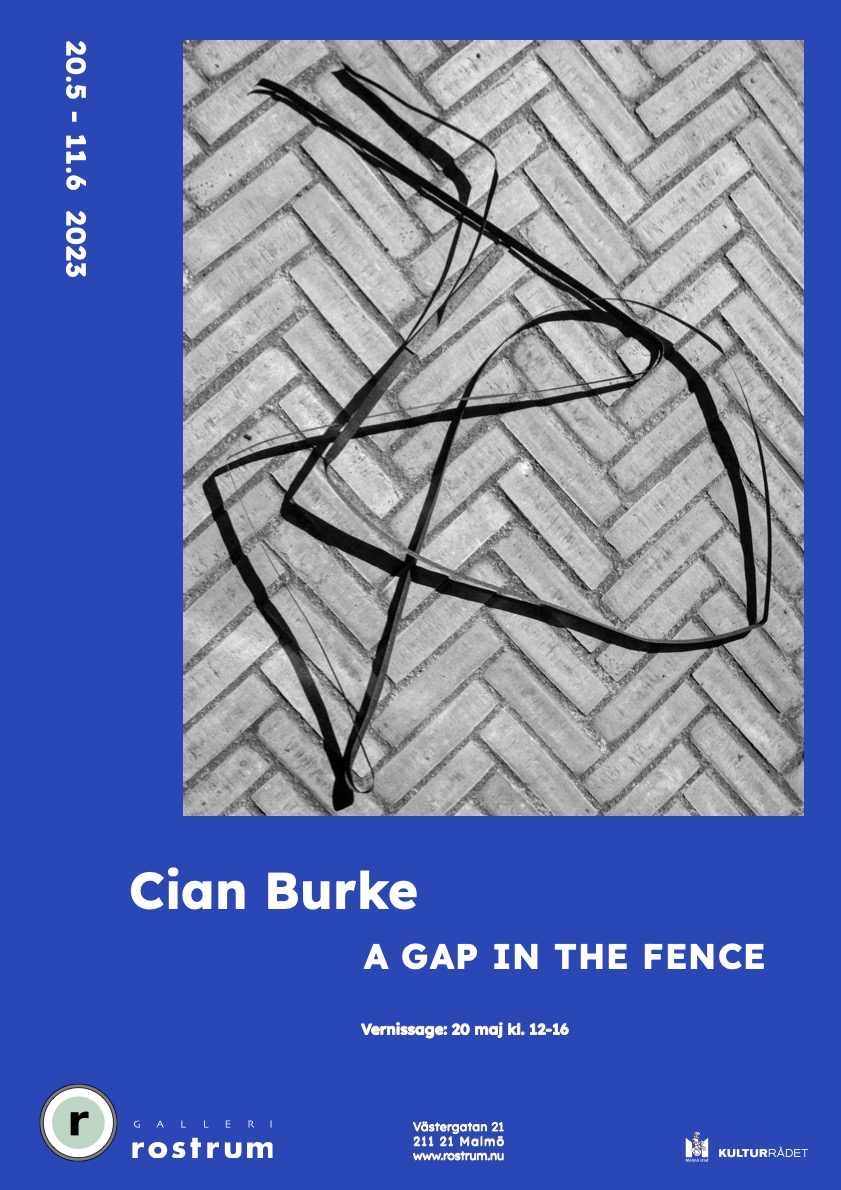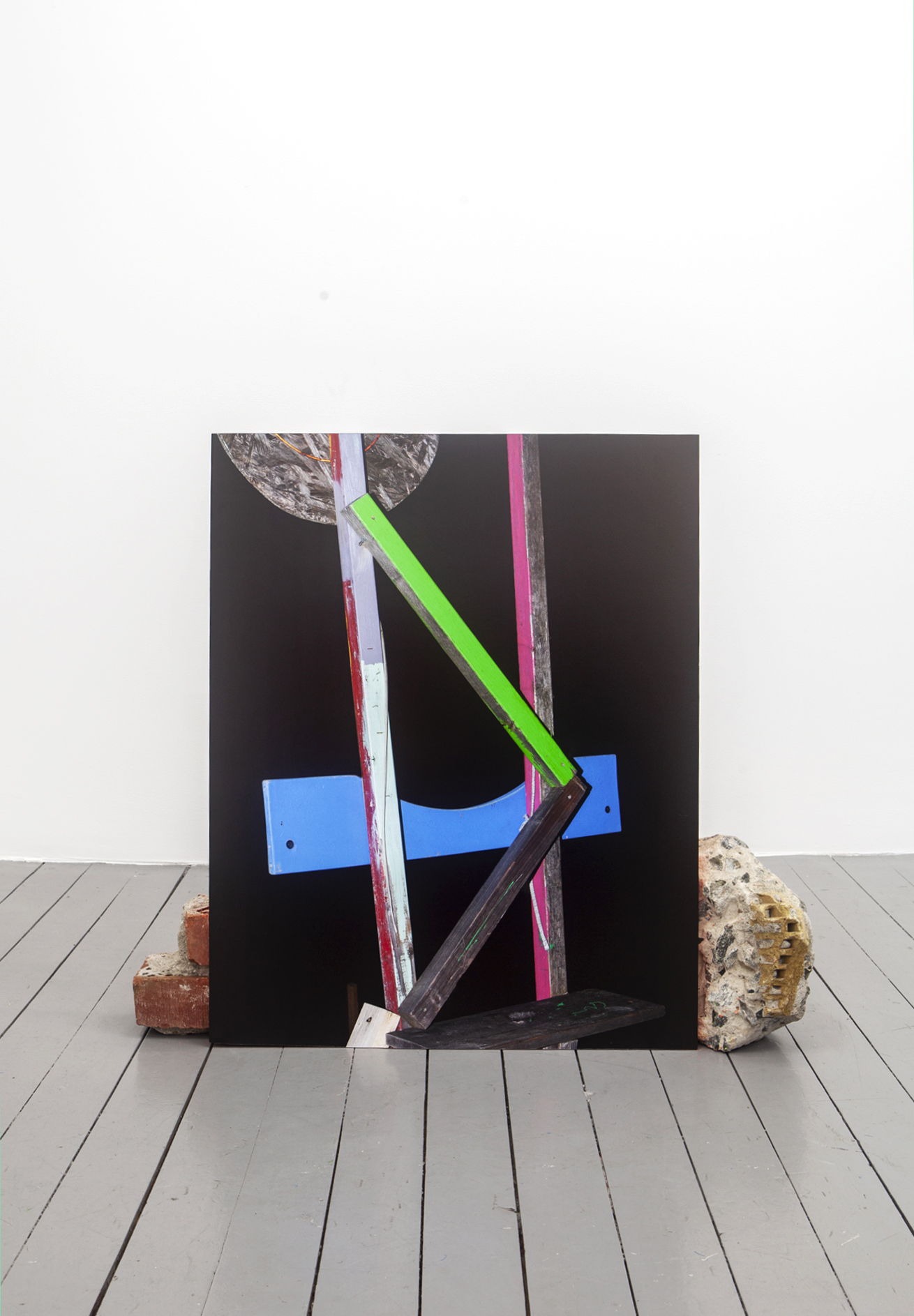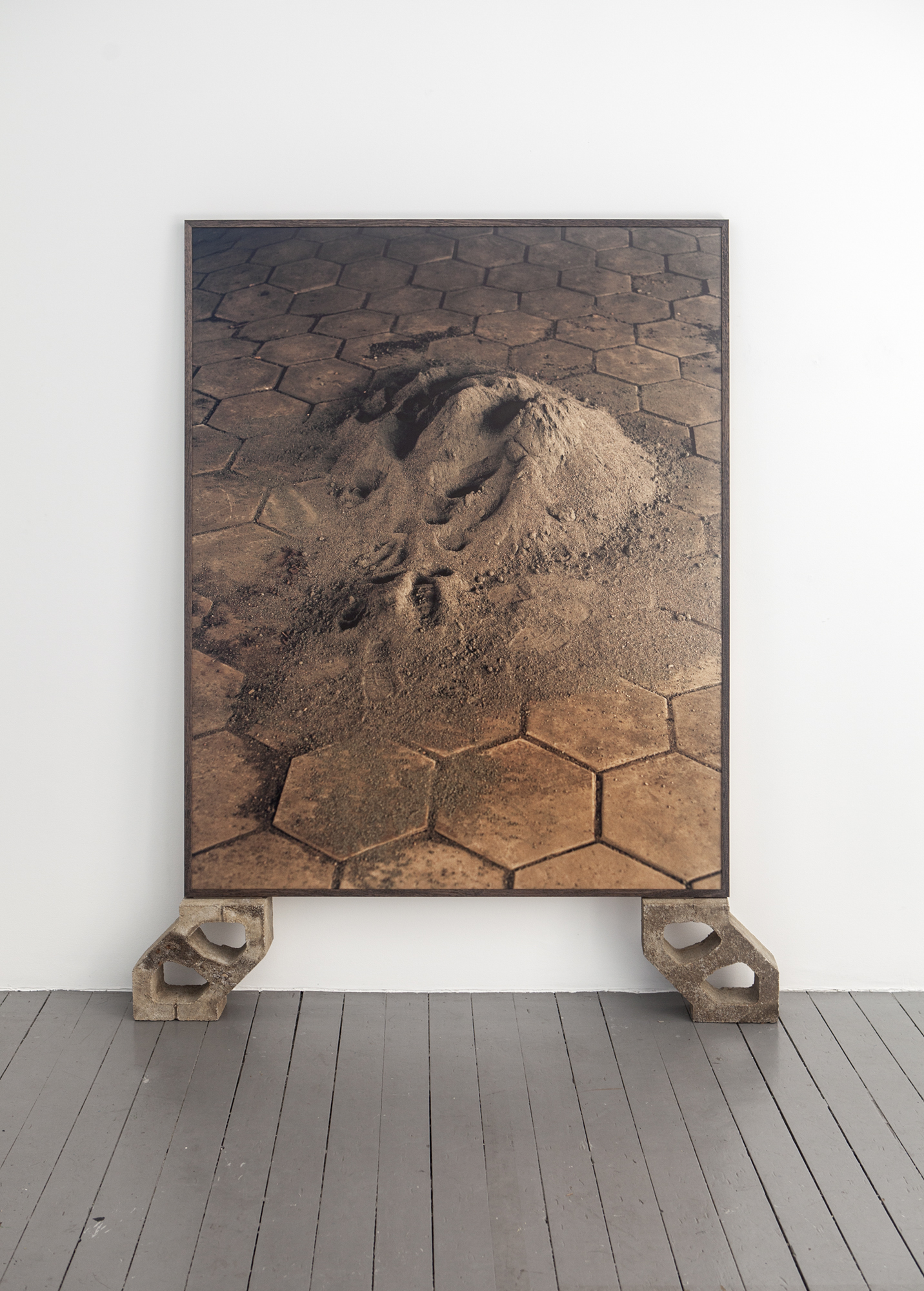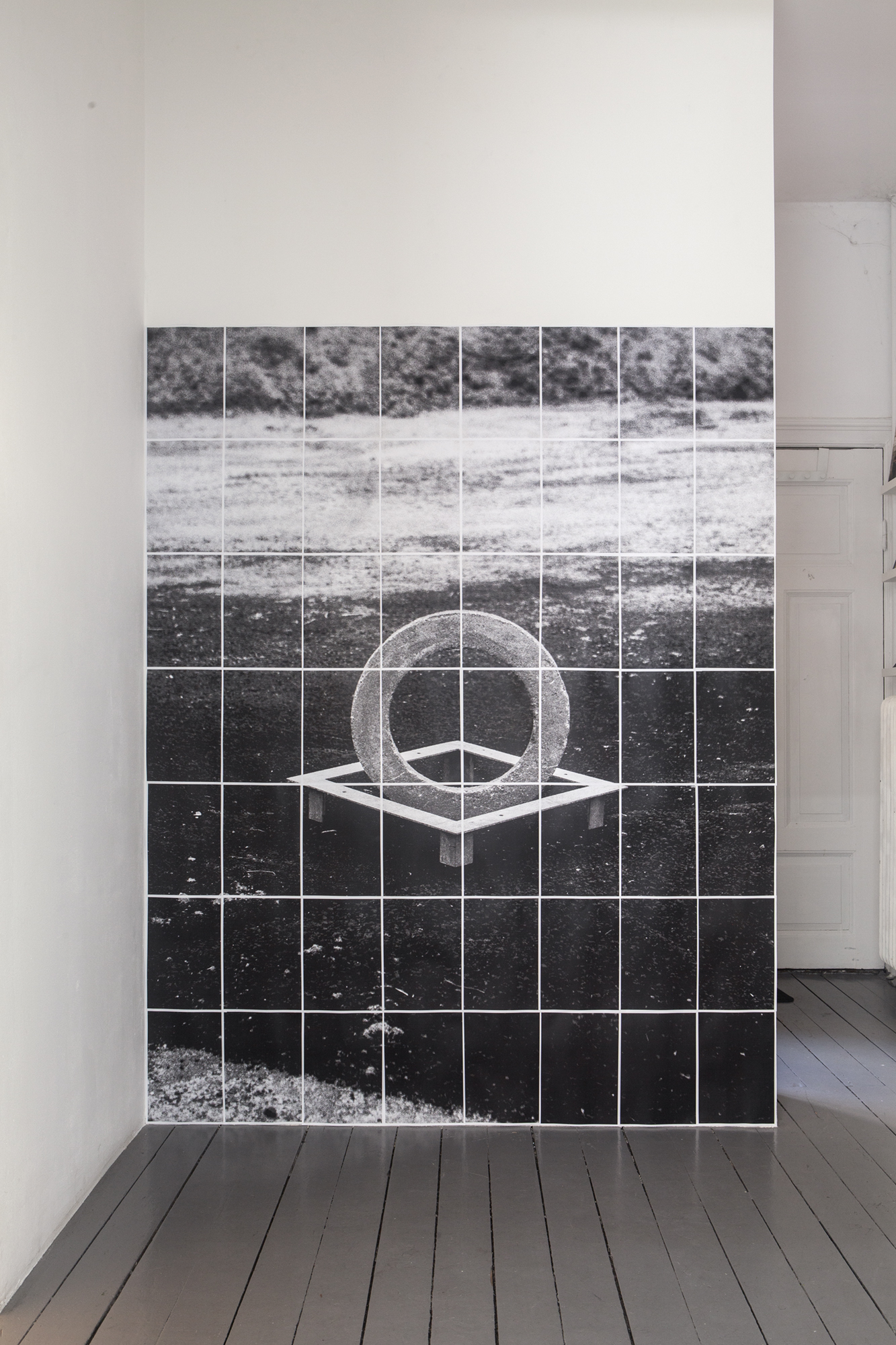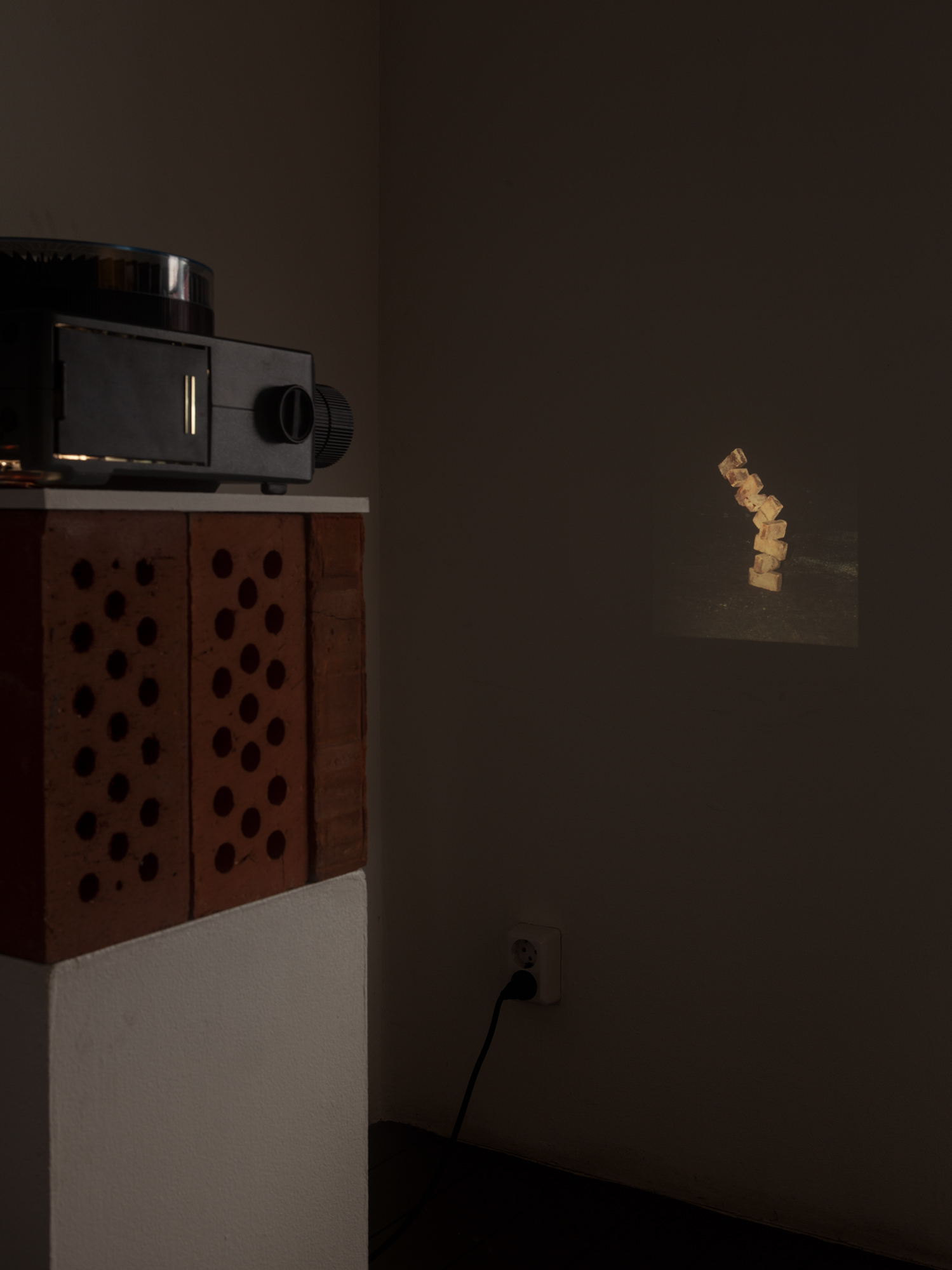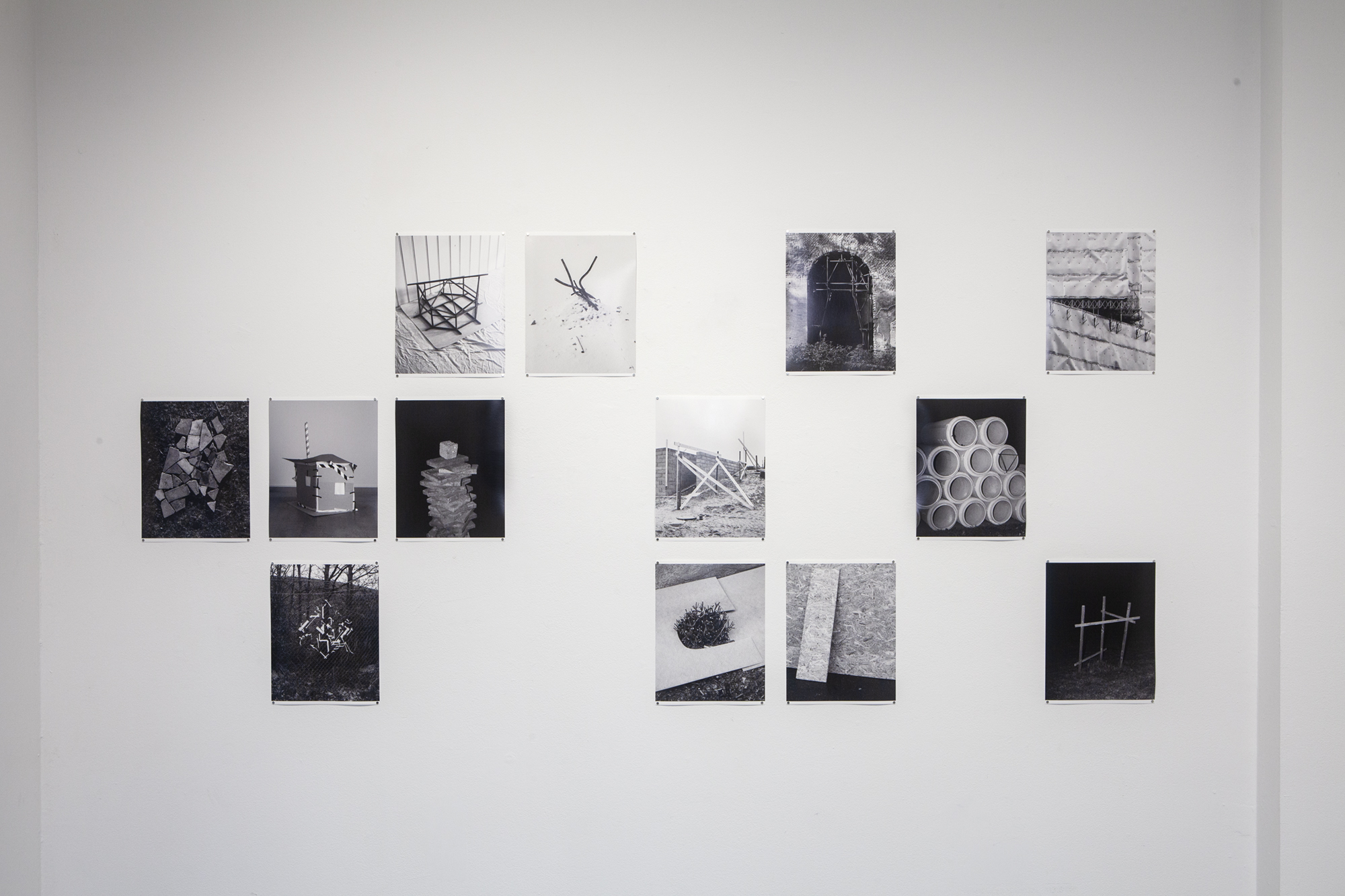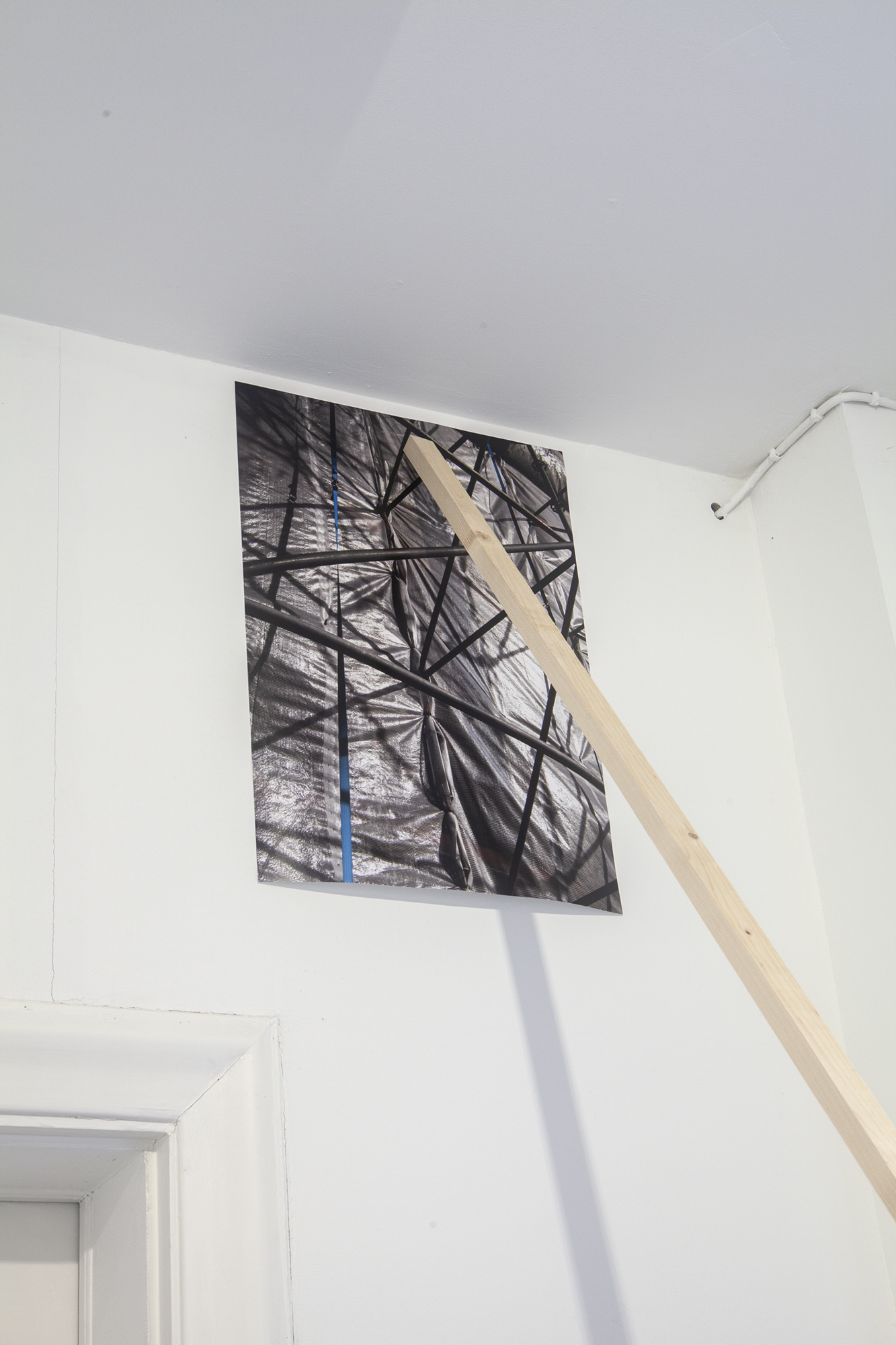Cian Burke
A Gap in the Fence
20 maj – 11 juni 2023
Cian Burkes bildspråk är fullt av strukturer och föremål som återfinns utspridda i stadsrummet. Ofta rudimentära, improviserade eller i förändring—någonstans mellan ruin och byggarbetsplats. Burke har ett långvarigt intresse av stadens sammansättning. Hans bilder kan ses som en inventering, klassificering och kategorisering av “lösdelar” från relationerna mellan den strukturerade stadsmiljön och de sociologiska och kulturella krafter som bebor den.
A Gap in the Fence är formulerad som en inbjudan till lekfull överträdelse. Ett sätt att bryta med stadsmiljöns strikta ordning, en flykt från de begränsningar som utformats för dig av andra.
“If the time of Work expands as seemingly limitless as a desert, that of adventure exists as a limited, often frustratingly small, patch of an oasis.”
-Frederico Campagna ”The Last Night – Anti-work, Atheism, Adventure” (2013)
The pictorial landscape of Cian Burke’s artistic practice is one filled with seemingly simple structures and objects that can be found strewn about the urban space. These structures are often rudimentary, makeshift or in the process of changing – sitting somewhere between ruin or a construction site. Objects might seem banal at first glance, either documented ”as found” or arranged so as to give them a geometrical appearance. Visually they hold references to some of the artists that inspire Burke, the likes of Richard Wentworth, Gabriel Orozco and Francis Alÿs. But specific to Burke’s work is that it is infused with an element of childlike play that seems driven by a search for a kind of day-to-day adventure. And to take these images at face value as only pleasing images fixed in time would be a mistake, as they also represent the remains of actions.
Burke has had a long-standing interest in the makeup of urban space, the relationship between structured city space and the sociological and cultural forces that inhabit it, as well as the contrast between the fixed aspects and the elements of flux that are embedded in the very nature of the contemporary city. His method for investigating these things is as simple as walking around, observing and photographing, drifting purposefully through the urban landscape. Along these walks he engages in simple gestures, interventions and transformative actions with the objects and makeshift constructions that he often encounters.
In this sense Cian Burke is more than a passive flaneur, as he takes on the role of a mischievous ’outsider’ sneaking around and entering the cracks of an otherwise meticulously ordered cityscape – clearly breaking with how these spaces are intended for one to interact with them. So it comes as no surprise that Burke also has an interest in the history and philosophy of adventure playgrounds (or ”junk playgrounds”). The first planned playground of its kind, the Emdrup Junk Playground, was opened just across the sea over in Copenhagen in 1943. The ideas for this new form of playground came about as the Danish landscape architect Carl Theodor Sørensen noted how children preferred to play everywhere else but in the playgrounds that he had designed, and the penny finally dropped after having seen a group of enthusiastic children playing in a construction site. What is special about adventure playgrounds is how these fenced off areas set aside for children are defined by an ethos of unrestricted play and the absence of adult-manufactured or rigid play-structures, and often littered with scrap materials and tools for free building. Later, the architect Simon Nicholson would come to define the concept of ‘loose parts’ as essential, noting: “In any environment, both the degree of inventiveness and creativity, and the possibility of discovery, are directly proportional to the number and kind of variables in it.”
With this in mind it’s not hard to look at Burke’s images of structures, building materials and arranged objects as an inventory, classification and categorisation of ‘loose parts’ found throughout the city. And what is a ’gap in the fence’ if not an invitation for playful transgression, to escape the confines designed for you by others, to adventure on grounds not meant for you, and to let one’s own proverbial child slip through and join in the play on the other side?
– Jesper Weileby
Cian Burke är konstnär och curator från Dublin, baserad i Sverige sedan 2010. Hans fotografi- och installationsbaserade praktik agerar vid skärningspunkten mellan det dokumentära och iscensatta, där begrepp om sanning sätts i förhandling. Burke har en kandidatexamen från Glasgow School of Art och en masterexamen från Akademin Valand i Göteborg. Några av hans senaste utställningar inkluderar On the Verge, CAMERA i Turin; New Irish Works, PhotoIreland Festival i Dublin; Den Stora Okända, Studio44, Stockholm; Extended Atlas, Lisbon; och CONNECTIONS, KlanGalerie, Berlin.Han har även medverkat i EU-finansierade projekt som Parallel Photography Platform (2019) och Futures (2022), och dessutom erhållit Konstnärsnämndens ettåriga och tvååriga arbetsstipendium.
Inspelning från vernissagedagens artist talk, modererat av Berit Sahlström:
-
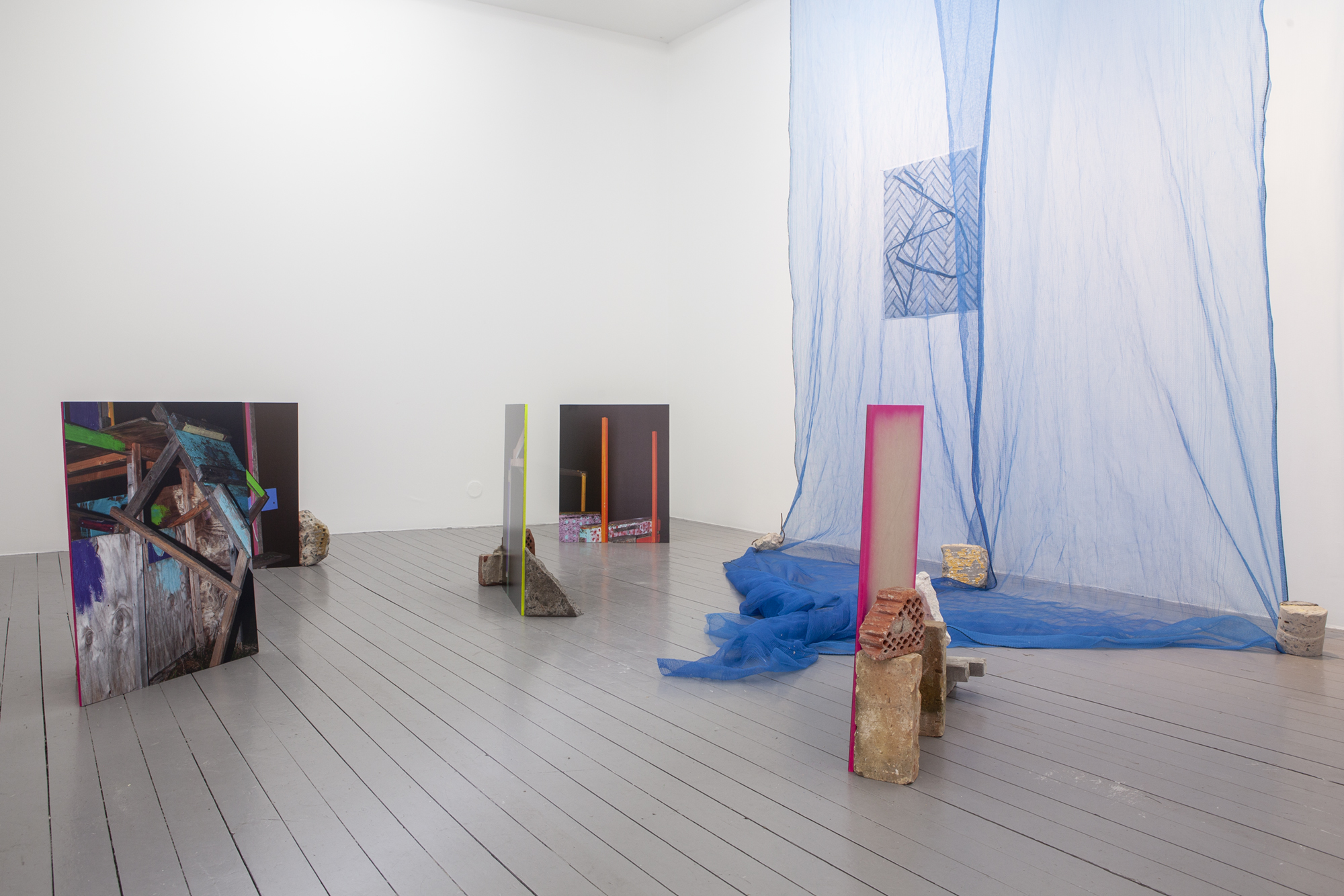
- Installationsvy: “The Limitless City (1-6)”, 2023. Gicléetryck och sprejfärg på arkivpapper (monterade på MDF), upphittat byggmaterial. 75 x 60 cm (5 ex.) (t.v.); “Cascade”, 2023. Installation (skärmnät, upphittat bygg-material). Varierande mått (t.h.)
-
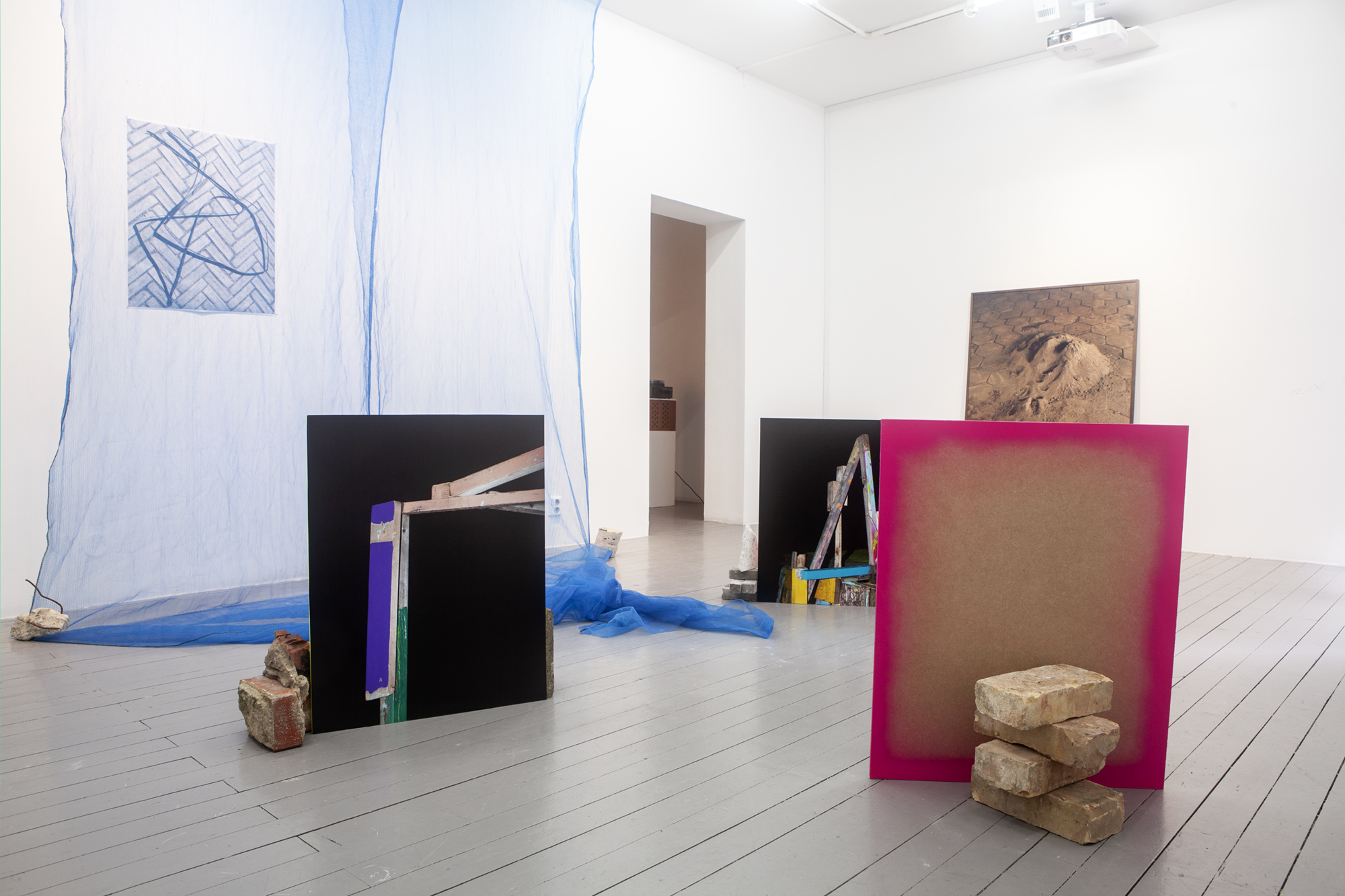
- Installationsvy: “Untitled”, 2023. Gicléetryck på arkivpapper. 75 x 60 cm (t.v.); “Cascade”, 2023. Installation (skärmnät, upphittat bygg-material). Varierande mått; ”Spectre”, 2017. Gicléetryck på arkivpapper 135 x 110 cm. (inramad). Ed. 1/5 + 2 AP; “The Limitless City (1-6)”, 2023. Gicléetryck och sprejfärg på arkivpapper (monterade på MDF), upphittat byggmaterial. 75 x 60 cm (5 ex.) (t.h.)
